Barbus green: description, maintenance and care
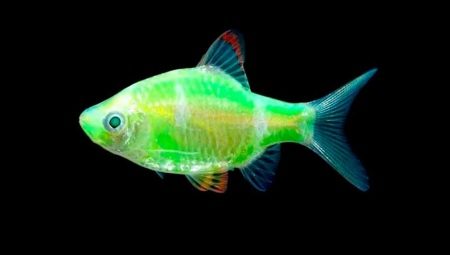
One of the most popular aquarium fish is the platinum green barb glofish, which is renowned for its unpretentious habitat and exceptional activity. In nature, this fish is found in the rivers of Southeast Asia, but thanks to its good vitality, it easily adapts to life in artificial reservoirs.
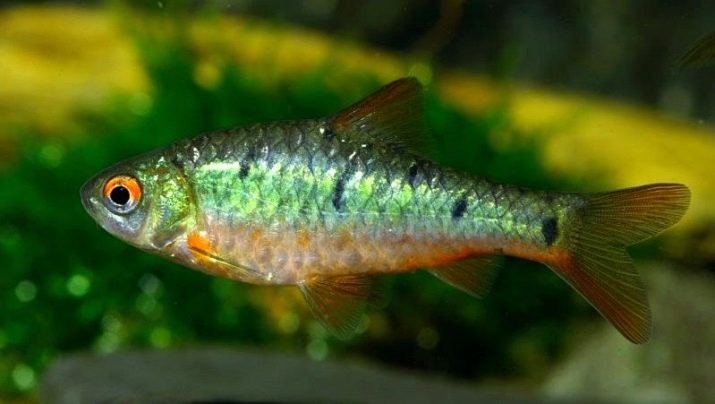
Description
The green barbus has a flattened and elongated body, a pointed head, and a pair of antennae near the mouth. As the name suggests, this fish has a greenish color with a slight golden tint, with dark, rounded spots on the sides. Each scale is decorated with a border, due to which the fish acquires a mesh color.
This aquarium inhabitant is small: its size does not exceed 7 cm. At the same time, males are slightly smaller than females, but at the same time they are brighter, in addition, reddish tints on the abdomen are characteristic of males.
Green varieties are distinguished from other barbs by their peaceful and calm nature - as you know, their relatives are famous for their irrepressible activity, turning into aggression.
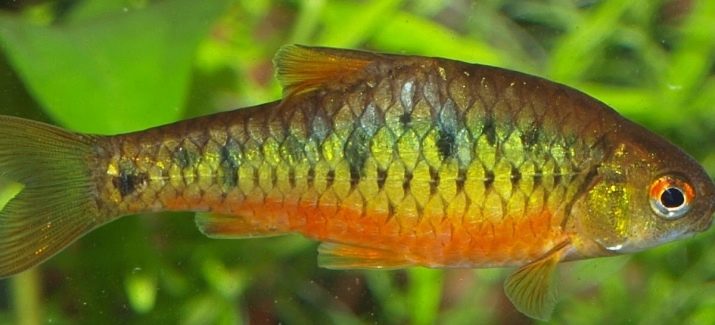
Inexperienced aquarists may be intimidated by the unusual sleeping habits of these fish. The fact is that at rest they hang upside down, this sight can scare beginners, who immediately assume that their pet is sick.
Green barbs are gregarious animals, so it is preferable to populate them in small groups of 6–8 individuals. As for other species, it is best to give preference to gourami, danios, tetras, catfish and thorns when choosing neighbors, but cockerels and lalius are completely unsuitable for them.
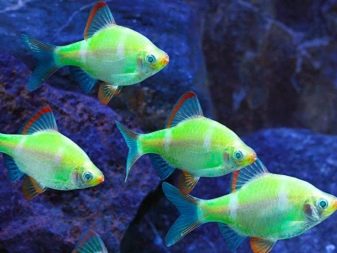

Life span
When creating a comfortable habitat and full care, green barbs live in captivity for up to 5-6 years, a variety of factors can affect a pet's lifespan.
- Stress. When aggressive fish that attack barbs enter the aquarium, the latter begin to experience strong anxiety, which significantly worsens their health and shortens their lifespan.
- Unsuitable temperature conditions: too warm or, conversely, cold water.
- Infectious and fungal infections.
- Power errors. Lack of a balanced diet, overfeeding or prolonged fasting can lead to the death of a pet.
- Poisoning. Occurs when an aquarium is overpopulated, when, as a result of the decomposition of waste products of its inhabitants, the release of nitrates and nitrites into the water begins.
In addition, decorative elements and soil containing dyes can cause changes in the chemical composition of water.
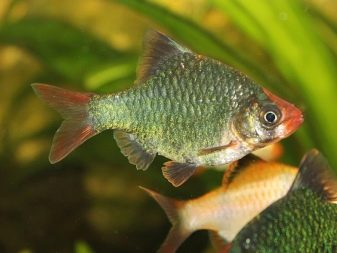

If you protect the barbus from adverse factors, then the chance that it will live a long time is very high.
Green barbs do not so often suffer from obesity, which occurs with a lack of activity and overfeeding, sometimes the fish are faced with infectious diseases.
- Rubella (aeromoniasis). In this case, the fish develop abdominal dropsy or bulging eyes, while the body of the affected individual begins to become covered with ulcers, spots and smudges, the appetite disappears, the animals try to stay closer to the surface of the water. The most common cause of infection is the habitation of a sick "newbie" or poorly rinsed aquarium equipment.
- White-skinned. Pathology in which the nervous system of the animal suffers. The skin becomes pale, and coordination of movements is impaired.
If any unfavorable symptoms are found, it is necessary to resettle the diseased fish, carry out a course of treatment, and replace the water by 50% and disinfect it.
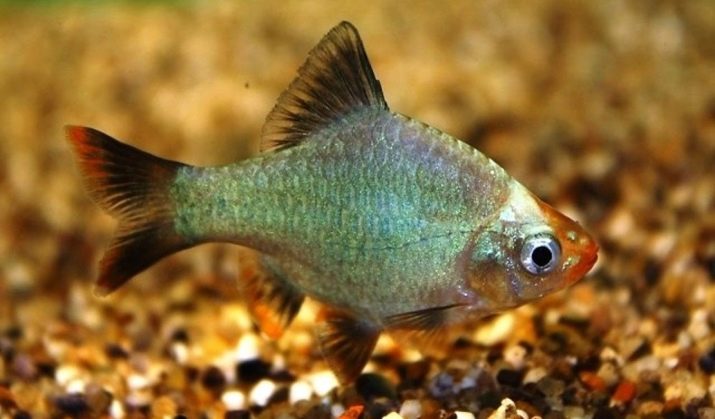
Content
Green barbs usually do not burden their breeders with any problems, so even novice aquarists can keep them in an artificial reservoir. Nevertheless, some rules of care must be observed: maintaining the purity of the water, quality nutrition and protection from aggressive individuals.
As for water, the following indicators are optimal for it in this case:
- temperature - 19-25 degrees;
- acidity - 6.5-7.5 units;
- hardness - 4–20.
Barbs prefer old water, but nevertheless it also needs to be renewed by 15–20%.
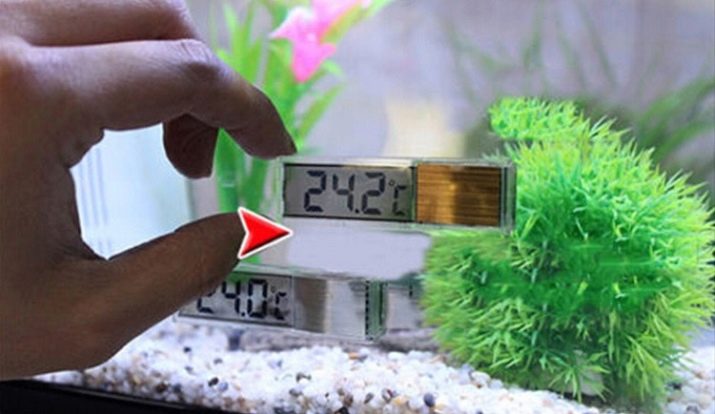
In order for the fish to feel comfortable, they need a space where they can swim to their heart's content, so it is advisable to choose a large aquarium for them (from 50 liters), best of all elongated. During games, fish can jump out of the tank, so it will be useful to cover it with a lid from above.
It is very important to provide round-the-clock filtration and aeration of the water. There is an opinion that the filter and compressor can be turned off at night, but this is a common misconception: in the absence of air dissolved in the water, the fish will experience oxygen starvation, as a result, they will look passive and sluggish.
The best soil for barbs will be unpainted river pebbles, which must be rolled in such a way that there are no sharp stones on which underwater inhabitants can get hurt. Small-leaved or artificial plants can be planted in the background of the aquarium, and it is advisable to leave the foreground free - barbs do not rise to the surface so often, so it is important to create conditions for them to swim freely in the water column.
Lighting should be diffused, muffled - fish cannot stand bright light. Direct sunlight should also be avoided.
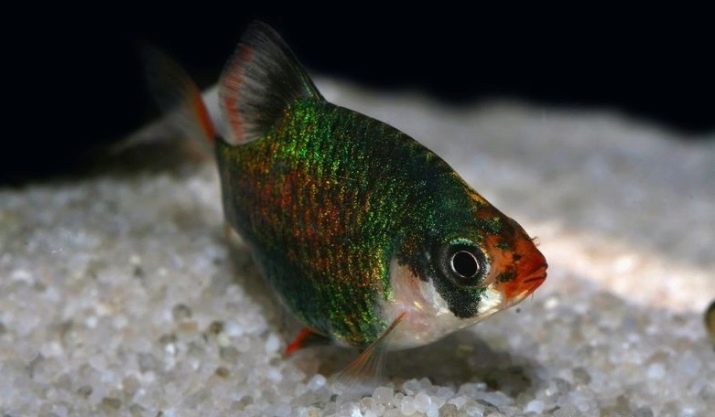
Nutrition
It is very important that the barbs receive a balanced and varied feed. It is advisable to include dry flakes in the diet, as well as bloodworms, brine shrimp and tubifex. Feeding is done twice a day.The optimal amount of food is calculated in such a way that the fish completely eat the offered food in 5-10 minutes, uneaten residues cause putrefactive processes in the water. Once a week, you can arrange fasting days for your pets - feed them once or not offer food at all.
From time to time, the diet should be diluted with plant products: spinach, lettuce and nettle leaves are very useful for barbs, granular feed containing spirulina would be useful.
Balanced food for green barbs can be purchased at any pharmacy. The following species have earned the best reviews from aquarists:
- Tetra Flakes - these are universal feed mixtures in the form of flakes, they contain spirulina, algae and are enriched with vegetable fats;
- Fd brine shrimp - food entirely consisting of brine shrimp;
- Sera Microgran - it is optimal for young animals, and it will be useful for adults as well.
When choosing food, it is important to monitor the condition of the fish, keep their activity and degree of mobility under control. If pets look lethargic, it is best to make dietary changes.
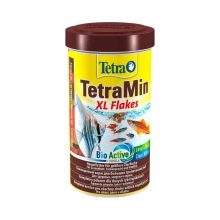
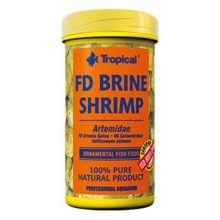
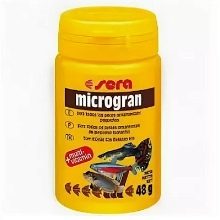
Reproduction
Barbs reach sexual maturity by 8 months. Shortly before spawning, the female and male must be kept separate from each other for about 10-14 days. Usually 8-9 mature females and 5-6 males are chosen for breeding. Females are selected with a large abdomen, and males are the most mobile and active.
A few hours before the spawn, the fish become too active and mobile, spawning itself continues quite quickly (no more than an hour). During this time, the females have time to lay eggs, and the males - to fertilize it. The productivity of one fish is about 200 eggs, after which the parents are immediately resettled. On the second day, the fry begin to hatch, on the first day, egg yolk or liquid feed is introduced into the water, and later it is already possible to offer the young nauplii Artemia or ciliates.
After 5 days, babies can be transplanted into a common aquarium, where they will fully grow and develop.
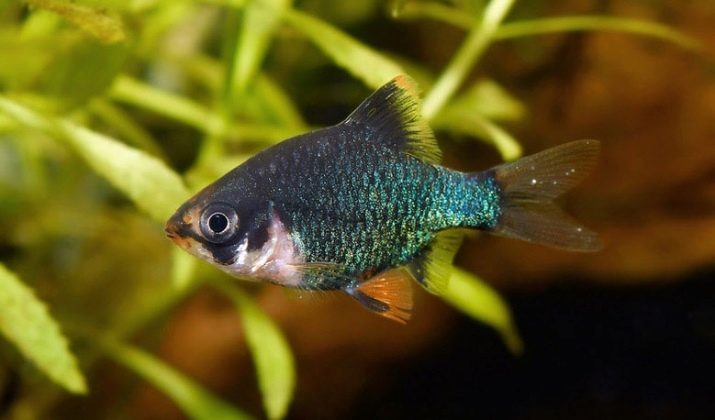
You can learn more about how to care for a green barbus below.








